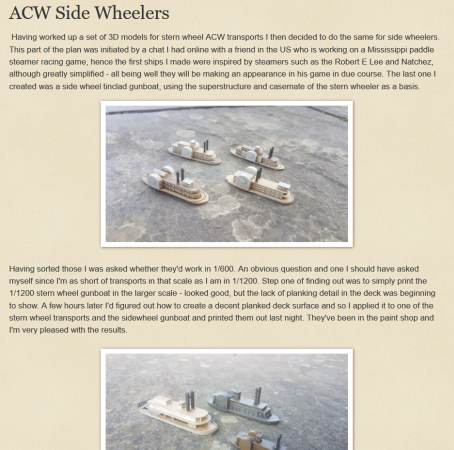When Osprey published the late John Hill's Across A Deadly Field, I thought that it looked like something I would like to try: a regimental-level ACW game. (I know the reviews have been mixed, but I can make up my own mind…)

Rather than try to refurbish my older armies, I was in the mood for new armies. I had unpainted 'reserves' in 2mm, 6mm, 15mm and 25mm, but I decided to try something completely new for me: soft plastic figures.
Back in the very early days of TMP, IMEX contacted me about doing some articles featuring their new (at the time) ACW series. They sent me the sample boxes, but before we got any further into the planning, they 'disappeared' on me – I couldn't get any further response from them, so I shelved the boxes and moved on.
So now it's 2017. IMEX is still around, but they no longer list their ACW series on their website. But that doesn't mean I can't put these figures onto the game table finally!
So I sent the figures off to our friends at Fernando Enterprises in Sri Lanka, knowing that they've got experience with soft plastic figures, and even more experience painting ACW figures.
By the time the painted figures came back from Sri Lanka, I had read the supplements to Across A Deadly Field and I was quite taken with the optional basing suggestion: to use generic bases and separate command stands.
One of the oddities of Across A Deadly Field is that it doesn't specify base sizes for 1:72nd figures, and since I was eventually going to field both armies, I decided I could go with whatever looked right to me: 40mm wide by 30mm deep. So, using Litko 3mm wooden bases, I based the figures up into 3-man and 2-man bases. (There are no 1-man bases in the optional rules.)
From a single box, I was able to make ten of these infantry bases (one is not pictured).
It's not a big force, but it's a start!
There are 50 figures in the set, in 50 poses.
The only pose I didn't use was the "guy sitting on barrel drinking." (Two of those in the box.)
The original figures are in soft blue plastic.
I had assumed – never a good idea! – that the painting service would use an appropriate primer for the soft plastic figures.
I discovered that the paint job was very fragile, particularly the rifles and ankles – you could actually hear the paint crack if the figures were flexed.
Therefore, I did a lot of painting repairs where the paint had cracked.
Fortunately, the paint jobs were much more robust once I based, flocked, and sealed them. I haven't had any problems since.
I've since sent a new batch of figures to the painters, but this time I primed them myself. Those figures turned out much better. ![]() (But I haven't based them yet.)
(But I haven't based them yet.)
As far as I can tell, these figures are no longer being manufactured, but they seem easy to pick up from retailers.
The optional rules suggest creating command stands which have no particular game function except that you can pair them with 'generic' infantry stands to create specific formations. I used 20mm wide by 30mm deep bases, with a strip of Litko FlexSteel at the back of the base.
Labels made with blue magnetic sheet will stick on the FlexSteel but it's a very weak pull.
Here's what a formation looks like.
The player can easily see the unit identification.
Smaller formations may need only a single infantry base. Larger formations may have as many as four infantry bases.
For command figures, I used the pointing leader, bugler, and flagbearer.
The bases are lined on the bottom with FlexSteel so they will stay put in their storage boxes.





